Recent Articles
Popular Makes
Body Types
10 Cars with the Best Safety Features in 2018

2019 Nissan Altima passenger front three quarter ・ Photo by Nissan
The vehicles with the best safety features have always been extremely popular with car buyers. But in the current marketplace, you’ve got more choices than ever if you’re focused on passenger protection. Even smaller cars can come with the kind of advanced technologies that, just a few years ago, you could only find on expensive upscale sedans.
Consider rearview cameras. Once a high-end luxury, they’ll soon be standard in nearly all new cars sold in this country. And on the topic of upscale sedans, those cars continue to push the safety envelope further and further. Let's look at some safe vehicles from across the pricing spectrum to appeal to a wide range of shoppers.
2018 Ford Fusion - Pothole Protection
The 2018 Ford Fusion is one of the mainstream cars with the best safety features. Naturally, Ford’s mid-size sedan has many of the typical technologies here, from a blind-spot system to automatic forward emergency braking to lane-keeping assistance.
But the reason it makes our list is that it also boasts a unique pothole-protection feature. Integrated with the continuously controlled damping system for the Fusion V6 Sport, this technology can tell when a given wheel is dropping into a hole. It then adjusts the shock absorbers to reduce the impact. Not only does the system protect occupants from a rough ride, but it protects the Fusion from damage as well. Further, by potentially avoiding a tire blow-out, the technology can reduce the chances for a post-pothole accident, too.
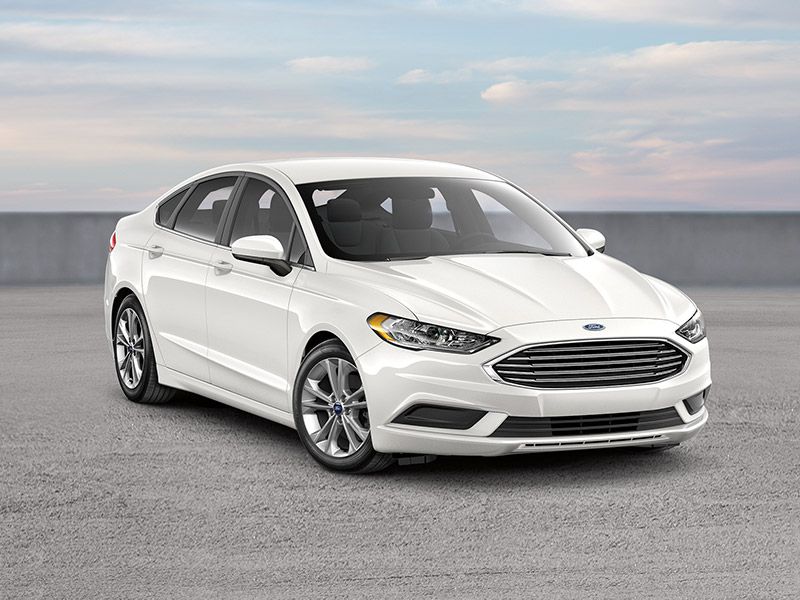
Photo by Ford
2018 Subaru Legacy - Automatic Reverse Emergency Braking
Now, we just mentioned automatic forward emergency braking, and while that can be an important technology, the system has become too common to stand out. The 2018 Subaru Legacy, however, is one of the first mainstream entries to take things to the next level.
Beyond Subaru hallmarks like standard all-wheel drive, the Legacy also offers automatic reverse emergency braking. This features ties into systems that monitor the rearward path of the Legacy when it’s in reverse. In some scenarios, if an object is detected behind the Legacy and the driver doesn’t respond to system warnings, the technology can automatically apply the brakes to avoid or mitigate a collision.
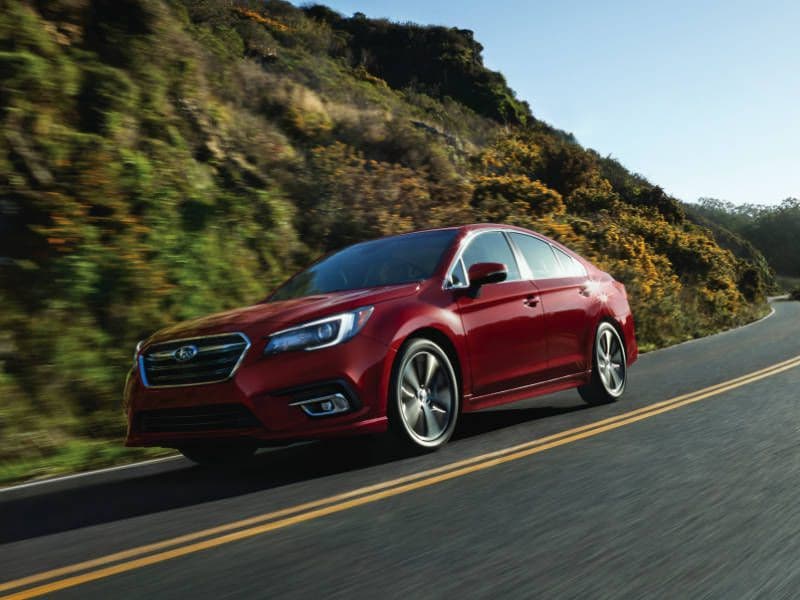
Photo by Subaru
2019 Nissan Altima - Intelligent Forward-Collision Warning
As you may have noticed, many of the cars with the best safety features make shoppers pay extra for them. The all-new 2019 Nissan Altima, which goes on sale in 2018, takes a more wallet-friendly approach. This mainstream mid-size sedan comes standard with a rearview camera, automatic forward emergency braking, a drowsy-driver monitor, and an "intelligent" forward-collision warning.
All those technologies are welcome additions to the entry-level Altima, but it’s that last one that really distinguishes the vehicle. Like typical systems, it can monitor vehicles directly in front of the driver. The difference is that Nissan’s "intelligent" setup can also keep track of cars and trucks ahead of those vehicles, too. Also, the Altima offers automatic reverse braking.
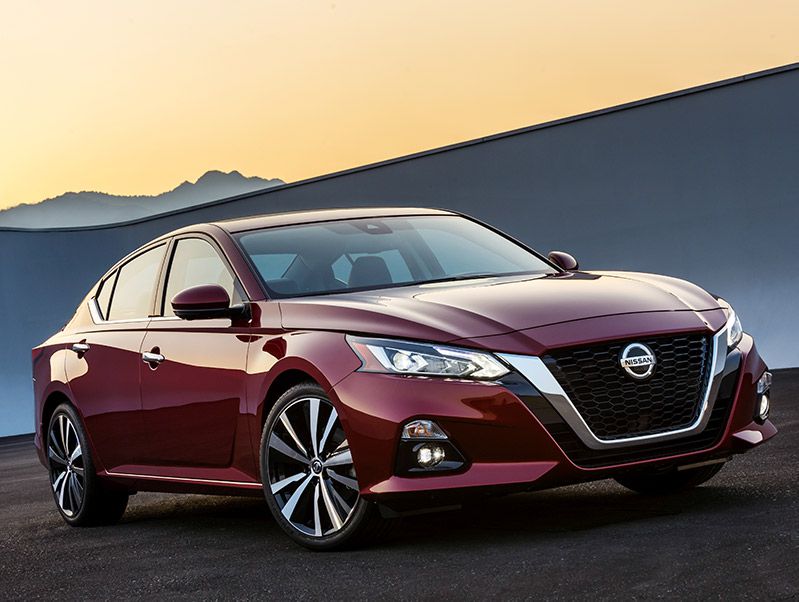
Photo by Nissan
2018 BMW 5 Series - Evasion Aid
Turning to premium cars with the best safety features, the 2018 BMW 5 Series has a difference-maker of its own. The automaker’s “Evasion Aid” feature is incorporated with BMW’s adaptive cruise-control functionality to help drivers avoid collisions with slowed or stopped traffic.
As you’re driving, one part of the system constantly monitors the space all around you. If the technology’s forward-facing camera detects a potential impact situation, and the driver begins to make an emergency-steering maneuver, the Evasion Aid can help guide the 5 Series safely into one of those spaces. Of course, like all of the vehicles in today’s gallery, the 5 Series also has a wide array of the more typical driver-assistance technologies.
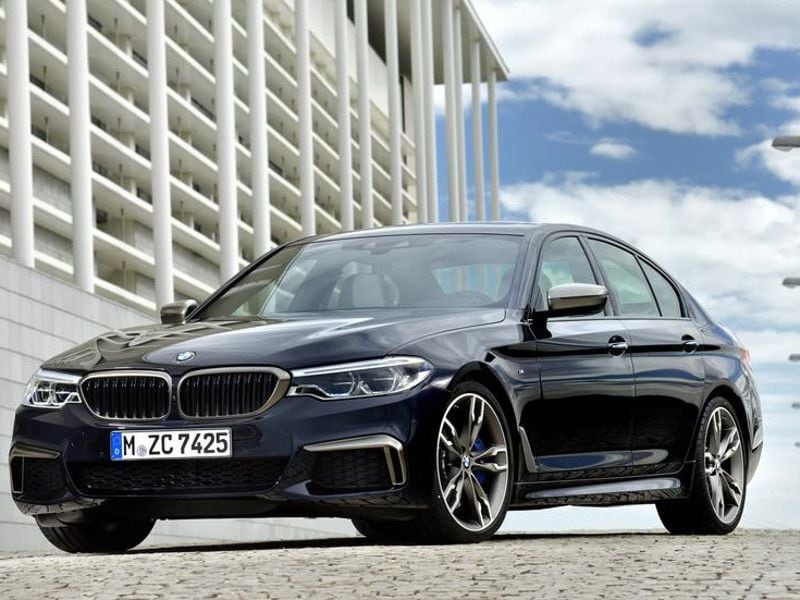
Photo by BMW
2018 Volvo S90 - Large Animal Detection
People sometimes joke about Volvo’s “moose test,” as if the only place you need to worry about large hoofed mammals is in the wilds of Sweden. But there are plenty of locations in this country where the chance of hitting a deer is no laughing matter.
In either case — and in a lot of similar situations — the 2018 Volvo S90 sedan has technology that’s specifically designed to help. It’s the Volvo's “Large Animal Detection” system. Living up to its name, this fine-tunes the usual pedestrian-detection technology that’s actually found on many of the cars with the best safety features. As a result, the S90 can also recognize moose, deer, and other potential four-legged road obstacles, then initiate warnings and automatic braking where appropriate.
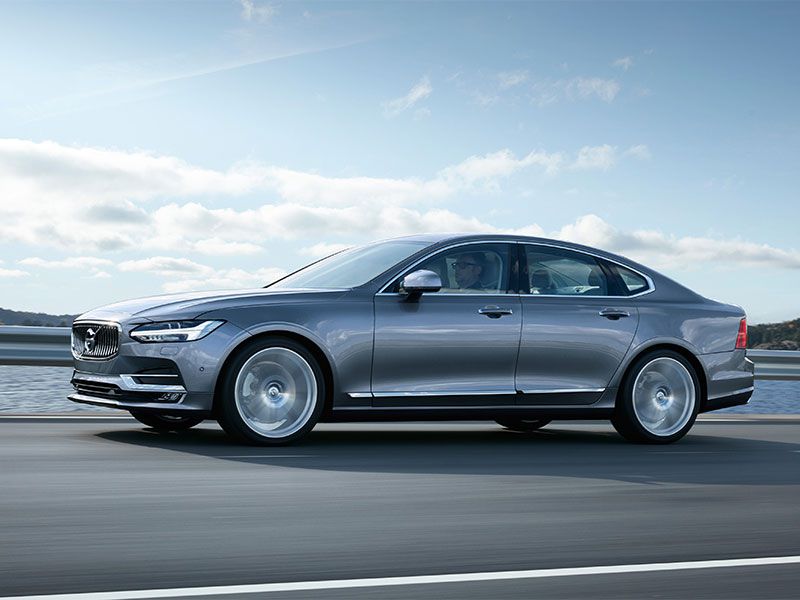
Photo by Volvo
2018 Chevrolet Malibu - Teen Driver System
Another way the cars with the best safety features can protect their drivers is by teaching them good driving habits. The 2018 Chevrolet Malibu, for example, is one of the many vehicles around today with teen-driving technology. The Malibu’s aptly named “Teen Driver” system can mute the audio volume until the front-seat occupants buckle up, set off alerts if the car is driven past your pre-set speed limits, and create an in-vehicle report card that shows how many times the Malibu’s other safety systems have been activated.
As for what those other safety systems are, they can include adaptive cruise control, automatic forward emergency braking, a lane-departure warning, a forward-collision alert, lane-keeping assistance, a blind-zone alert, a rear cross-traffic alert, a rearview camera, parking sensors, and automatic parking assistance.
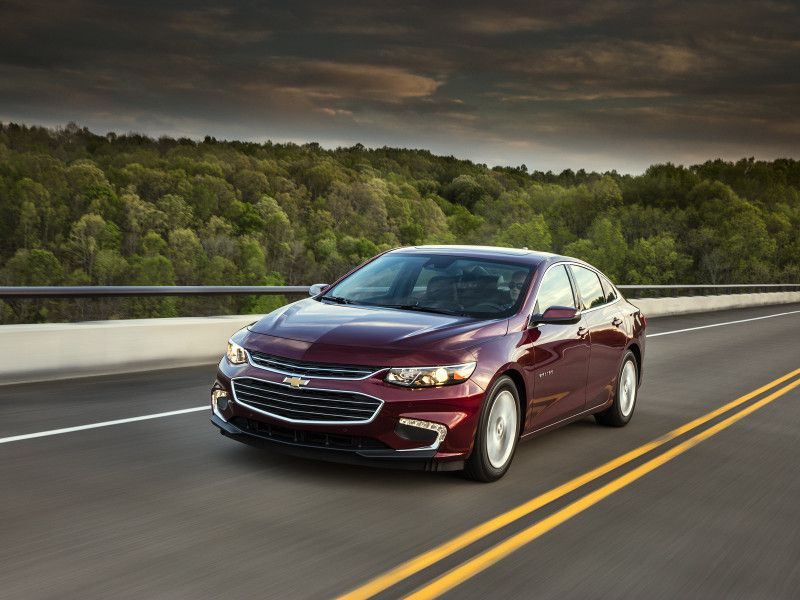
Photo by General Motors
2018 Mercedes-Benz E-Class - Evasive Steering
The 2018 Mercedes-Benz E-Class offers many different driver-protection technologies. Adaptive cruise control, lane-change assistance, and even evasive steering are all in the mix with Mercedes’ premium mid-size sedan.
To earn our notice, though, the E-Class also ups the ante with features like Active Brake Assist with Cross-Traffic. Here’s how it works: If you’re at an intersection preparing for a left turn, the system scans for oncoming traffic. If approaching vehicles are detected, the system lets you know with visual and audible alerts. Finally, if you try to turn anyway, it can automatically apply the brakes to mitigate a collision.
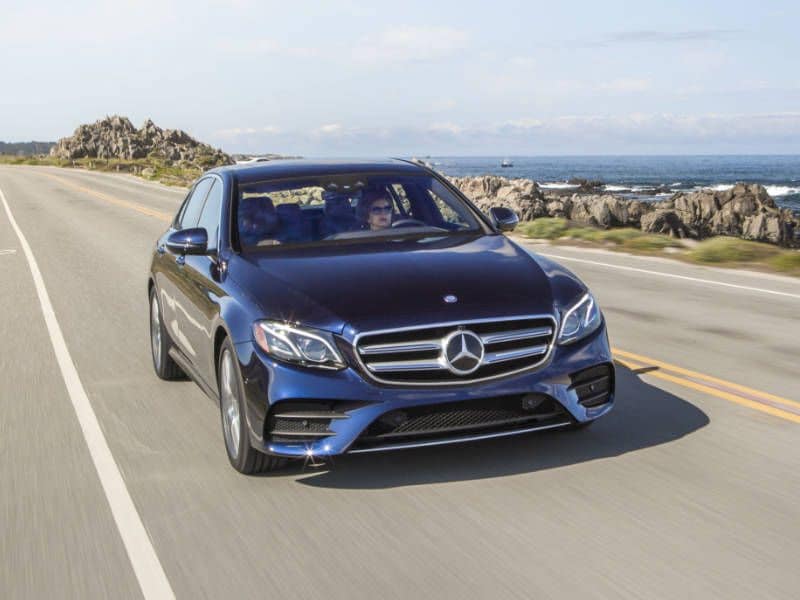
Photo by Mercedes-Benz
2018 Toyota Camry - Standard Safety Technology
We’re going to stretch our definition of the cars with the best safety features to also include the 2018 Toyota Camry. No, the Camry doesn’t have some brand-new high-tech gadgetry onboard to protect passengers. But it does have all the usual suspects and a notable advantage of its own. For the Camry, forward-collision warning, automatic forward braking, pedestrian detection, adaptive cruise control, lane-departure warning, lane-keeping assistance, a rearview camera and automatic high beams are all standard equipment — at a price tag of $23,495.
There are luxury cars that cost three times that much and don’t have the same amount of standard safety tech. The Camry also is available with even more driver-assistance measures, such as a blind-spot monitor, a rear cross-traffic alert, and automatic reverse braking.

Photo by Toyota
2018 Honda Accord - Traffic Sign Recognition
Like its Toyota Camry rival, the 2018 Honda Accord provides many of its safety technologies as standard equipment. The Honda package bundles collision-mitigation braking, a forward-collision warning, a lane-departure warning, road-departure mitigation, adaptive cruise control, and a multi-angle rearview camera with dynamic guidelines.
The Accord also introduces a new standard feature that’s often reserved for luxury cars: traffic-sign recognition. That can recognize speed-limit info from traffic signs, then display it on the driver-information screen to help improve your awareness of road conditions. Among the top Accord safety options are a blind-spot monitoring system, a rear cross-traffic alert, and a drowsy-driver monitor.
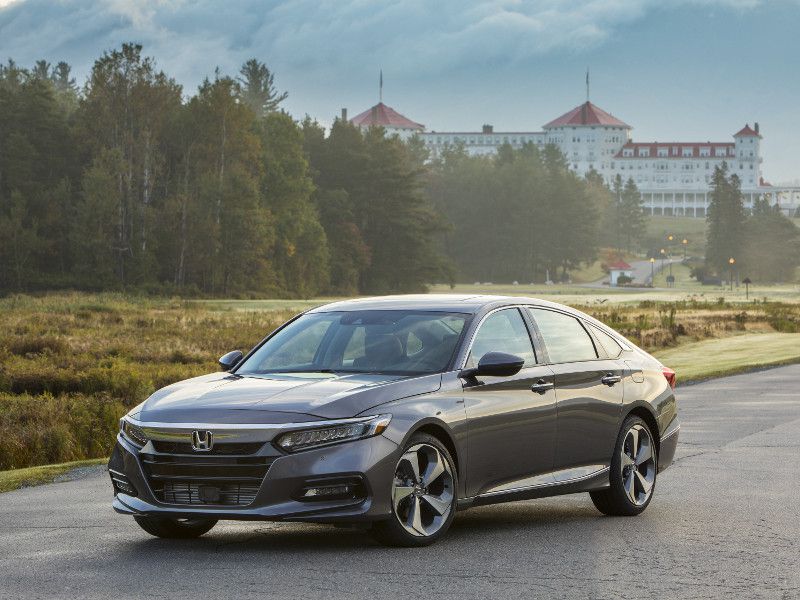
Photo by Honda
2018 Buick LaCrosse - Safety Alert Seat
Driving by the seat of your pants may not sound like a good idea if you’re concerned about passenger protection. Yet that’s exactly how the 2018 Buick LaCrosse earns a spot on our list of cars with the best safety features.
To be more specific, the LaCrosse offers General Motors' Safety Alert Seat. This ties into the vehicle’s other safety systems, like a blind-zone alert, to support the typical visual and audible warnings. If the safety systems detect a vehicle in your blind spot, for example, they send vibrations to the same side of the driver's seat that the potential hazard is on. It can help you identify those hazards for yourself a little quicker than otherwise, so you have a better chance of avoiding them.

Photo by General Motors